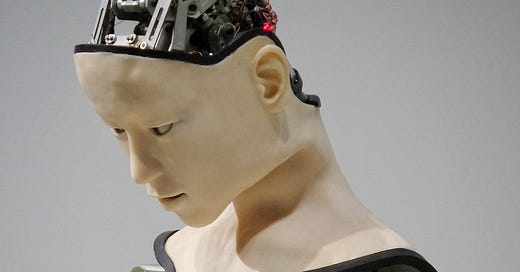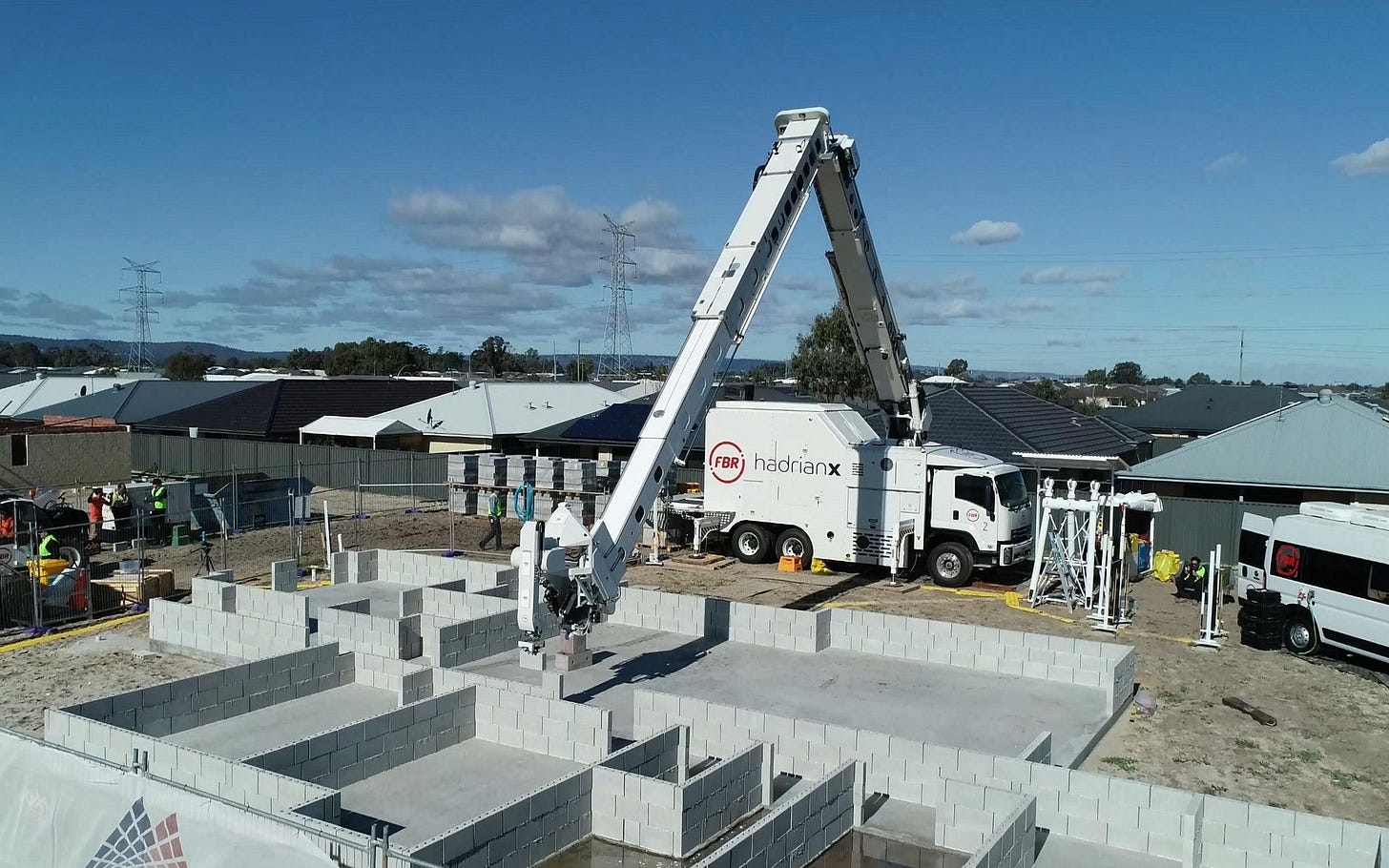Innovative Solutions for Modern Construction: Advanced Robotics
The Future of Building: Leveraging Advanced Robotics in Modern Construction
A pillar of human civilization since the beginning, the construction sector is constantly changing and adjusting to the shifting demands of society. The use of robotics in construction is growing in importance as we approach the start of an entirely different age. Recent developments in artificial intelligence, computer vision, and improved hardware have helped the field of robotics advance significantly. As a result, sophisticated automated systems have been created, which could completely change how we construct and maintain our infrastructure.
Today, we'll look at the state of robotics in the construction sector, different types of advanced robotics in use, actual construction projects that use these technologies, and how to get the current workforce ready for a robotic future. By looking at these challenges, we hope to offer a perception into the future of construction and the part that cutting-edge robotics will play in influencing that future.
By boosting productivity and efficiency, lowering labor costs and the risk of accidents, and enabling more environmentally friendly and sustainable practices, robotics can significantly enhance the way construction is done.
We should be ready to look at the current state of robotics in the construction industry, various forms of cutting-edge robotic technology that are in use, actual construction projects that make use of these technologies, and how to get the current workforce ready for a robotic future.
Understanding the potential advantages of implementing these technologies is crucial as we explore the world of advanced robotics in construction. robotics can significantly enhance the way construction is done, by boosting productivity and efficiency, lowering labor costs and the risk of accidents, and enabling more environmentally friendly and sustainable practices. Issues like: urbanization, climate change, and global resource shortages can be addressed adopting these technologies.
The State of Robotics Today in the Construction Sector
Over the past several years, the construction industry has seen a surge in the adoption of robotic technologies. While the use of robotics in construction is still in its early stages, various applications have emerged that demonstrate the potential value of these advancements.
One of the primary drivers behind the adoption of robotics in construction is the need to improve productivity. The construction industry has long been plagued by stagnant productivity rates, with research suggesting that construction labor productivity has not significantly increased since the 1940s. This lack of progress stands in stark contrast to other industries, such as manufacturing, which have seen substantial productivity gains over the same period.
Robotic technologies have the potential to address this productivity challenge by automating repetitive and labor-intensive tasks. For example, automated bricklaying robots can lay bricks far more quickly and accurately than a human worker, while robotic exoskeletons can enhance the physical capabilities of construction workers, reducing fatigue and the risk of injury.
The need to address labor shortages is another factor causing robotics to become more prevalent in the industry. There is a severe lack of skilled labor in many countries, which can result in cost overruns and project delays. By lowering the number of workers needed on a site and allowing current workers to complete tasks more effectively, robotics can help to solve this issue.
Advanced Robotic Technology
There are several categories of advanced robotics that are making an impact in the industry. These include:
Autonomous construction equipment: They are autonomous construction vehicles, like tractors, bulldozers, and excavators, that can navigate construction sites and carry out tasks without the need for a driver. These robots are more efficient and precise than human workers because they can work continuously and accurately.
3D printing robots: By layering concrete or other building materials, these can create intricate architectural structures. They can produce unique and complex patterns that are challenging or impossible to build using conventional construction techniques. Additionally, 3D printing can help promote more environmentally friendly building techniques by using less waste and material.
Demolition robots: These are made to carry out tasks like drilling holes, cutting steel, and breaking concrete. They are especially helpful in dangerous or constrained areas where it might be risky for human workers to work. Construction companies can lower the chance of mishaps and injuries on the job site by using demolition robots.
Inspection and maintenance robots: These robots inspect and keep an eye on building sites and infrastructure like bridges, tunnels, and pipelines using cutting-edge sensors and computer vision technology. Such robots can efficiently and accurately spot issues like cracks or leaks, enabling more proactive maintenance programs that lower the risk of expensive failures.
Real-world Applications
Several groundbreaking projects around the world are demonstrating the potential of advanced robotics in construction. Here are a few notable examples:
The MX3D Bridge in Amsterdam: This 3D-printed steel bridge was constructed by a team of robots over the course of several months. The robots used advanced welding techniques to create a unique and intricate design that would have been difficult to achieve through traditional construction methods.
The Hadrian X bricklaying robot: Developed by Australian company Fastbrick Robotics, the Hadrian X is capable of laying bricks at a rate of up to 1,000 per hour. In a demonstration project, the robot successfully constructed a three-bedroom, two-bathroom house in just three days.
The SAM100 masonry robot: Created by Construction Robotics, the SAM100 (Semi-Automated Mason) robot can lay bricks up to six times faster than a human worker. The robot has been used in numerous construction projects in the United States, including the construction of a school in New York and a hotel in Indiana.
Preparing the construction workforce for a robotic future
Making sure the workforce is ready for these changes is crucial as the construction sector continues to adopt advanced robotics. This will require further education current workers as well as preparing the next generation for interaction with robotic technologies. Understanding the potential and constraints of robotics in construction is a crucial component of this preparation. In order to effectively use these technologies, personnel must develop the ability to distinguish between tasks that require human intervention and those that can be completed by robots. Workers will additionally need to acquire new skills related to programming, operating, and maintaining these machines as robotics become more common on construction sites. To ensure that future generations of construction workers are prepared to succeed in a robotic future, education and training programs will need to change to focus on these areas.
Final Thoughts
Advanced robotics are poised to play a significant role in influencing the building industry's future, which is already here. As we've seen, robotics can significantly increase productivity, lower labor costs, and support more environmentally friendly and sustainable construction methods. The industry can confidently embrace the future by comprehending the potential of robotics and preparing the workforce for these changes. The potential for innovation in the industry is truly limitless as we continue to push the limits of what is possible. These solutions can be leveraged to increase overall production, reduce costs, and increase worksite safety.
References
Decmyk. (2021, July). Long-Awaited 3D Printed Stainless Steel. Decmyk Blog. Retrieved from https://decmyk.blogspot.com/2021/07/long-awaited-3d-printed-stainless-steel.html
FBR. (n.d.). Hadrian X. FBR Australia. Retrieved from https://www.fbr.com.au/view/hadrian-x
BuiltWorlds. (n.d.). Retooled Robotic Mason Brings Added Might to sites. BuiltWorlds. Retrieved from https://builtworlds.com/news/retooled-robotic-mason-brings-added-might-to-sites/







